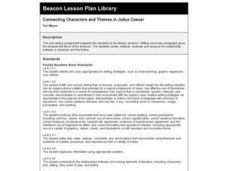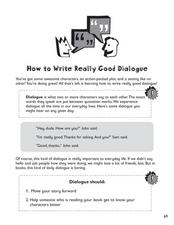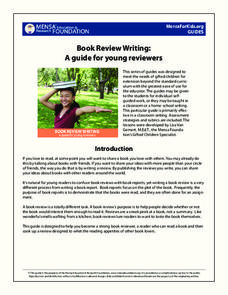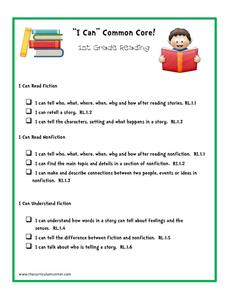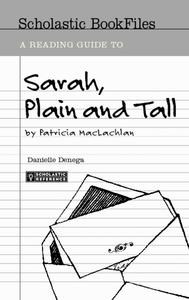Curated OER
Who? What? Where? When? - Story Elements
Second graders see how to identify and describe character, setting, and plot in various stories from picture books and story videos. They use picture books and story videos to practice identifying and describing the story elements.
Curated OER
THE ADVENTURES OF TOM SAWYER by Mark Twain
Learners read in class the novel The Adventures of Tom Sayer by Mark Twain. They can choose to find song lyrics from any artist that they feel define one of the characters in the book, illustrate a scene from the book or create their own...
Curated OER
Freedom Train North
Fourth graders conduct a novel study of the book Freedom Train North. They identify the parts of a story that include beginning, middle, and end. Students also recognize the setting, plot, and theme after reading a part of the book daily.
Curated OER
Story Outline
Students examine the qualities of a piece of writing. In this language arts lesson, students begin writing by following an outline for what goes into a story. Students illustrate their story when it is finished and share their stories...
Curated OER
Lesson One: How Change Affects Our Lives
Sixth graders discuss fears and how their lives change as they grow up. In this change lesson plan, 6th graders read the poem "Whatif" by Shel Silverstein. They discuss things they are afraid of or what they used to be afraid of.
Curated OER
Connecting Characters and Themes in Julius Caesar
Fourth graders prepare for the literary analysis. They locate, interpret, evaluate and analyze the relationship between a character and the theme. After a lecture/demo, 4th graders write topic and detail sentences, then correctly put...
Vanier College
Analyzing Short Stories/Novels
Good questions can help focus readers' attention on the elements writers use to add depth to their stories. The questions on this worksheet do just that and encourage readers to think critically about a story and author's purpose.
Curated OER
Fairy Tales
Once upon a time are four words most children are familiar with when reading a fairy tale. But do they know that fairy tales are a great way to learn the literary elements of reading and writing? Use a thorough fairy tale unit...
Curated OER
Express Yourself Lesson Seed 13: Character Development 2
Building upon prior lessons in the series, this reading and writing exercise requires pupils to look back at their own writing, track character development in the novel The Cay, and analyze how Phillip has changed. The reading focus is...
Curated OER
How to Write Really Good Dialogue
How do you create (and punctuate) really good dialogue so that it moves your story forward and provides strong characterization? Use this literary worksheet loaded with examples, clearly stated directions, and fun exercises. Fifth...
MENSA Education & Research Foundation
Book Review Writing: a Guide for Young Reviewers
Encourage scholars to share their love of reading with informative and engaging book reviews. Here, you'll find a series of guides that walk learners through the review writing process. Included in the collection is information about...
Tell City Schools
The Cay
Support your instruction of The Cay by Theodore Taylor with this extensive unit of materials. Provided here are prereading activities, worksheets and discussion questions for the entire book, and reading quizzes that you can use to check...
Curated OER
Pudd'nhead Wilson: Concept Analysis
Learn all about the book Pudd'nhead Wilson with this analysis of the text. You can plan your unit with the useful teacher information provided here and use the project ideas to enrich instruction.
Curated OER
Practice Book O
Whether you need resources for reading comprehension, literary analysis, phonics, vocabulary, or text features, an extensive packet of worksheets is sure to fit your needs. Based on a fifth-grade curriculum but applicable to any level of...
Teachit
Keeping a Reader's Journal
A reader's journal can help pupils comprehend, connect to, and remember a text. Have them follow the prompts here to write journal entries for any literary text.
District 186 Springfield Public Schools
Tone, Mood, Theme, and Motif
It's all well and good when you're asked to identify a speaker's tone using his or her body language, facial expression, and pitch and emphasis. Identifying the tone of a written passage is another challenge entirely. Check out an...
Curriculum Corner
"I Can" Common Core! 1st Grade Reading
This series of printable I can statements breaks down first grade Common Core reading standards into child-friendly terms. A great resource for providing clear learning objectives for young readers.
Curated OER
Adventure Story
It's always fun to make up something together as a class. This fine instructional activity has children make up and illustrate a collaborative adventure story. The essential elements of a good story (setting, characters, plot, help,...
Curated OER
Introduce Vocabulary: Clap Your Hands
Read Clap Your Hands to explore new vocabulary with your class. In this three-tiered vocabulary lesson, youngsters read the book and identify the plot, setting, and characters. They also define vocabulary terms from the book and...
Curated OER
Story Web
Use a graphic organizer or story web to show the relationship between plot and character. They note the setting, characters, title, author, conflict, and solution regarding short story or novel they have read.
Scholastic
A Reading Guide to Sarah, Plain and Tall
Eliminate the hard work of creating an entire literature unit with this reading guide for the novel Sarah, Plain and Tall. From background information about the author and her motivation for writing the story to...
Core Knowledge Foundation
Stories Tell It Again!™ Read-Aloud Anthology
An anthology created for kindergarteners explores classic stories that have been told for generations. Young scholars listen to 10 read-alouds, answer reading comprehension questions, and practice a skill related to the text. Stories...
Core Knowledge Foundation
Kings and Queens Tell It Again!™ Read-Aloud Anthology
A royal read-aloud anthology offers a look inside the life of kings and queens. Songs and stories showcase royal characteristics and story elements and boost reading comprehension skills. Discussions highlight the difference between...
Curated OER
Writing a Fictional Narrative
Fourth graders write a fictional narrative using the computer. They can use files to help them focus on including a beginning, middle and end, characters, setting and plot or planning a story by answering questions.
Other popular searches
- Setting Plot Main Characters
- Plot, Characters and Setting
- Plot Characters and Setting
- Plot Setting Characters





